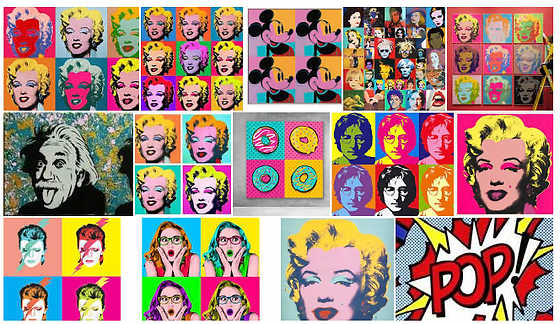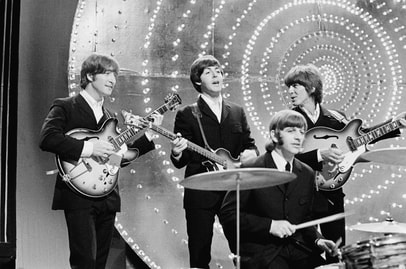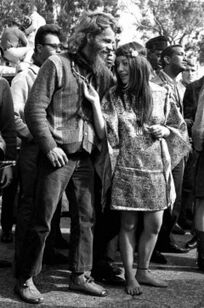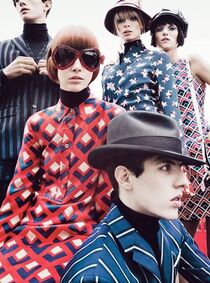1 - Overview
The decade was characterized by a sense of rebellion against traditional values with youth culture emerging as a dominant force. Pop culture reflected the growing social and political activism of the time, with the civil rights, feminist, and anti-war movements influencing the music, movies, and literature of the decade. To learn more about pop culture during the 1960s follow these steps:
- As you read each section, identify the text structure being used. (Don't forget to do this one first.)
- Next, use the chart at the bottom to identify the letter associated with that text structure.
- Finally, enter the letters in the correct sequence to unlock the code.
2 - Woodstock
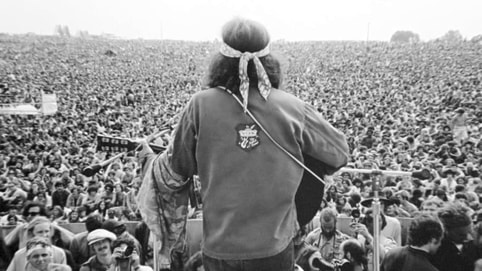
On August 15, 1969, the Woodstock Music Festival began in Bethel, New York, as an opportunity for concert-goers to escape into music and spread messages of unity and peace. The festival was originally billed as “An Aquarian Experience: 3 Days of Peace and Music,” and was expected to draw a crowd of around 50,000 people. However, word of the festival spread, and eventually, half a million people attended the event. The festival faced several challenges as a result. The original venue in Wallkill, New York, backed out of the agreement, forcing the organizers to find a new location. Bad weather also threatened the event, with heavy rain and mud causing significant difficulties for attendees. Additionally, the hordes of attendees made it difficult to provide adequate security and facilities.
Despite these challenges, the Woodstock Music Festival was a peaceful celebration that earned a place in pop culture history. Performances by legendary musicians such as Jimi Hendrix, Janis Joplin, and The Who helped to make the festival an iconic moment and a symbol of the counterculture movement's desire for peace and unity.
Despite these challenges, the Woodstock Music Festival was a peaceful celebration that earned a place in pop culture history. Performances by legendary musicians such as Jimi Hendrix, Janis Joplin, and The Who helped to make the festival an iconic moment and a symbol of the counterculture movement's desire for peace and unity.
3 - Art & LiteratureArt in the 1960s was characterized by the rise of pop art, a movement that challenged the traditional boundaries of fine art by incorporating elements of popular culture, such as advertisements, comic books, and consumer products. Pop art celebrated the mass-produced, commercial aspects of American society and critiqued the elitism of traditional fine art. Andy Warhol was a key figure in the pop art movement.
Literature in the 1960s was also marked by a shift towards more experimental and unconventional styles. The Beat generation, a group of writers and poets who rejected mainstream society in favor of alternative lifestyles, had gained popularity in the 1950s and continued to influence literature in the 1960s. Other literary movements that emerged during this time include the Black Arts movement, which emphasized the importance of African American culture and identity, and the New Journalism movement, which blended traditional journalism with literary techniques. |
4 - Music
|
Music played a significant role in the 1960s pop culture with the rise of rock and roll and the Beatles. The Beatles, in particular, had a significant impact on the music scene with their distinctive sound and style influencing countless artists that followed. The timeline presents some of the most significant events and releases in music.
|
|
5 - Self-Expression
|
The 1960s was a decade marked by the emergence of the counterculture movement, which rejected mainstream values and embraced alternative lifestyles and political beliefs. The movement was driven by many young people who were involved in social and political activism, anti-war sentiments, and the search for personal freedom and identity. This shift in attitudes towards individuality and self-expression was also reflected in fashion and style, which underwent significant changes with the rise of the mod and hippie subcultures.
The mod style was characterized by sharp, tailored looks that rejected the previous conservative fashion trends of the 1950s. The mod movement embraced shorter hemlines, bold patterns, and vibrant colors. In contrast, the hippie style embraced a more free-spirited and bohemian aesthetic, with men growing their hair long and sporting beards, and women embracing the "flower power" look of long flowing dresses and bare feet. The hippie movement's fashion style became a symbol of the counterculture's values of peace, love, and anti-establishment. |
6 - Social Changes
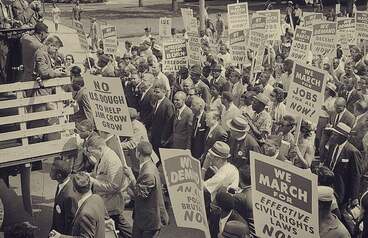
In the 1960s, a shift towards more liberal and progressive attitudes was witnessed with various social movements such as civil rights, feminism, and anti-war activism gaining momentum. However, despite the progress, there were still significant issues to be addressed. One of the most significant social changes was the civil rights movement, which aimed to end racial segregation and discrimination against African Americans. The movement was marked by protests, marches, and acts of civil disobedience, and it brought to light the deeply entrenched racial injustices prevalent in society. The problem of systemic racism and discrimination was identified, and steps were taken to tackle it.
Another social movement gaining traction was the women's liberation movement. Women advocated for equal rights and opportunities in areas such as employment, education, and politics. The movement focused on breaking down traditional gender roles and challenging societal expectations of women. Despite gaining some momentum, the movement faced significant opposition from those who believed in maintaining the status quo. However, the persistence of the activists and their demands for change led to significant progress towards gender equality.
Another social movement gaining traction was the women's liberation movement. Women advocated for equal rights and opportunities in areas such as employment, education, and politics. The movement focused on breaking down traditional gender roles and challenging societal expectations of women. Despite gaining some momentum, the movement faced significant opposition from those who believed in maintaining the status quo. However, the persistence of the activists and their demands for change led to significant progress towards gender equality.

